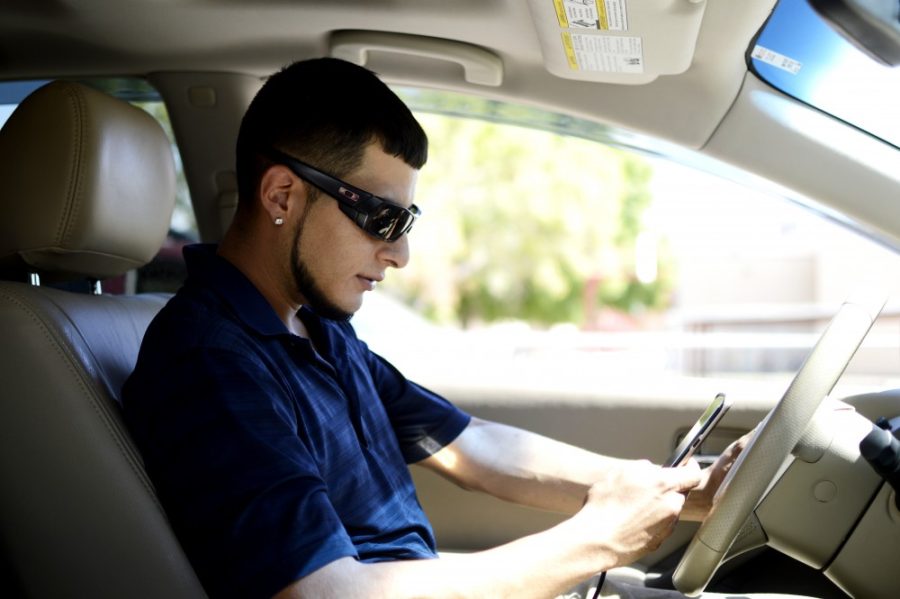Drivers in Pima County will now be ticketed if they are caught texting while driving with the new Pima County texting ban in full effect.
The texting and driving ordinance was unanimously approved by the Pima County Board of Supervisors on May 17. The ordinance, which became effective on June 16, is followed by a 30-day grace period, according to the Pima County Sheriff’s Department.
The grace period allowed awareness of the new ordinance to build, and drivers were only given a written warning if pulled over for texting and driving.
Now, Pima County sheriff officers will be issuing tickets. According to the Pima County Sheriff’s Office press release, “a person may not, while driving a motor vehicle on a highway, manually manipulate a handheld electronic device for any purpose other than to initiate, receive, or engage in voice communication.”
Pima County Sheriff Chris Nanos said a violation of the ordinance is a civil traffic violation, which will cost drivers $100 or $250 if the violation involves a motor vehicle accident.
“There’s a lack of attention on Tucson’s roads,” Nanos said. “We just felt like it’s time to get into the 21st century.”
In 2014, 3,179 people were killed and 431,000 were injured in motor vehicle crashes involving distracted drivers, according to distraction.gov, a U.S. government campaign to end distracted driving. Distracted driving is described as texting, using a cellphone, eating or even just talking to passengers.
While Nanos urges drivers to not use their devices at all while driving, if the light is red and the vehicle is not moving, drivers may use their cell phones in compliance with the ordinance. Nanos said it’s an arguable loophole.
Nanos hopes that through this ordinance, people will make a habit out of putting their phone down while driving; just like putting on a seatbelt.
“I’m hoping that in the next five to 10 years, people will get the idea and we’ll have a 90 to 95 percent compliance rate where people are no longer texting and driving,” Nanos said.
Nanos said excuses such as emergencies or using a cell phone as a navigation system doesn’t make the ordinance harder to enforce. Drivers can pull over to reply to the text or answer the phone, or simply enter in the location into their phone before putting the car in drive.
For Mark Spear, a systems engineer and traffic safety researcher, the ban on texting and driving is important but the language of the ordinance could create a pretext for sheriff officers to pull over drivers.
“I would have liked to have it refer more specifically to ‘head down texting while driving,’” Spear said.
Spear said he fears that with the new ordinance, drivers will be more likely to keep their devices in their lap to be hidden from officers instead of at eye level near the steering wheel.
“Looking down, texting while driving is what we’re seriously talking about,” Spear said.
Bianca Cortez, a sociology and Latin American studies sophomore said Pima County’s texting and driving ban is long overdue.
Cortez is from California where a statewide ban on texting and phone use while driving has been active since 2008 when Gov. Arnold Schwarzenegger first introduced the legislation.
“I know of a lot of people who unfortunately have lost their lives at too young of an age due to texting and driving or phone use,” Cortez said, “and I do believe it has had an impact on the people in California as well as everybody keeping each other accountable.”
Cortez said over the years she has noticed that more people are taking texting and driving seriously and recognize its risks.
“I really do think that young people are holding each other accountable,” Cortez said.
If a driver begins texting or using their phone, Cortez said passengers almost always tell them to put his or her phone down.
“It’s not about fines, it’s not about how many tickets we can write,” Nanos said. “It is really just about being safe on the roadway.”
Follow Amanda Oien on Twitter.









